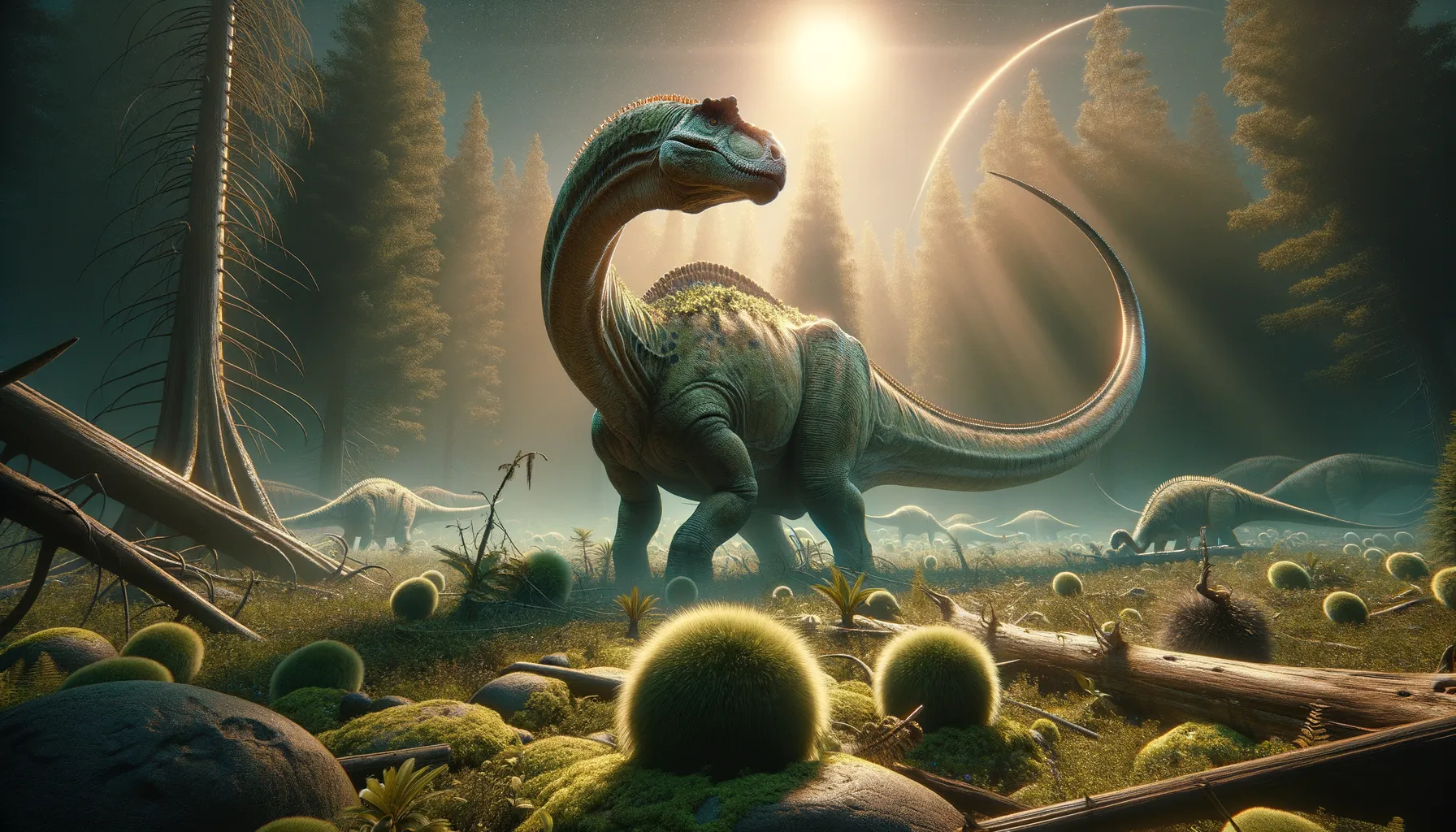
Asiatosaurus
Mysterious giant of the Cretaceous era.
Period
Cretaceous
Length
Could grow up to 15 meters long.
Height
Stood about 4 meters tall.
Weight
Estimated at several tons.
Asiatosaurus was a large herbivorous dinosaur that roamed the Earth during the Cretaceous period. It is known for its significant size and potential sauropod characteristics. Featuring a long neck and tail, it likely foraged for plant material high off the ground. Its fossil discoveries offer valuable insights into the diversity of ancient dinosaur life in Asia during the Cretaceous.
Diet
As a herbivore, it primarily consumed plant material. Its long neck suggests it could reach high vegetation sources, while its size allowed it to forage for a wide range of plants.
Hunting
Being a herbivore, it did not hunt but instead relied on plants for sustenance. Its feeding strategy likely involved browsing on tall plants, minimizing its need to move rapidly.
Environmental challenges
During the Cretaceous period, Asiatosaurus faced challenges such as climate fluctuations and changes in vegetation. Competition for food resources with other herbivorous dinosaurs might have been significant. Predators also posed a constant threat, requiring adaptations for defense, such as size and group behavior.
Speed
Likely slow, as it was a large herbivore.
Lifespan
Could have lived for several decades.
First discovery
Discovered in the early 20th century in Asia.
Fun Facts
- Asiatosaurus was one of the first dinosaurs discovered in Asia, specifically in Mongolia.
- It lived during the Early Cretaceous period, which is around 125 million years ago.
- Asiatosaurus is known primarily from fossilized teeth, which paleontologists use to learn about its diet.
- The name Asiatosaurus means 'Asian lizard,' highlighting its discovery location.
- Because remains are scarce, much about Asiatosaurus is still a mystery to scientists.
- Asiatosaurus is believed to have been a herbivorous dinosaur, munching on plants.
- Despite its name, very little is known about its full appearance or size due to limited fossil evidence.
Growth and Development
Asiatosaurus likely experienced rapid growth during its early life stages to reach its enormous size. Juveniles might have been more vulnerable to predation, growing rapidly to reach a safe size. Developmentally, it might have taken many years to reach full maturity.
Habitat
Its likely habitat consisted of lush, forested areas with abundant vegetation. The environment would have supported a variety of plant life, crucial for its herbivorous diet. Water sources nearby would have been essential for sustaining such large creatures.
Interaction with other species
Asiatosaurus might have coexisted with other herbivorous dinosaurs, sharing food resources in its habitat. It would have also encountered predators, relying on its size or the safety in numbers for protection. In mutualistic relationships, it might have unintentionally aided smaller animals through its foraging activities.
Natural lifespan
It naturally lived over several decades, typical for large dinosaurs.
Reproduction
Asiatosaurus likely reproduced by laying eggs, similar to other dinosaurs. Nests would have been created in safe environments to protect the eggs and hatchlings. Parental care could have varied, but guarding the nest from predators was likely necessary.
Social behaviour
It might have lived in herds, providing safety in numbers against predators. Herd behavior could have facilitated cooperative foraging and protection for younger members. Communication within the group was likely through body language and vocalizations.
Fossil locations
Fossil remains of Asiatosaurus have been primarily found in Mongolia, contributing to the understanding of prehistoric life in Asia. These discoveries highlight the diversity of dinosaur species during the Cretaceous period in this region. Ongoing excavations in Asia continue to reveal more about its existence and ecology.
